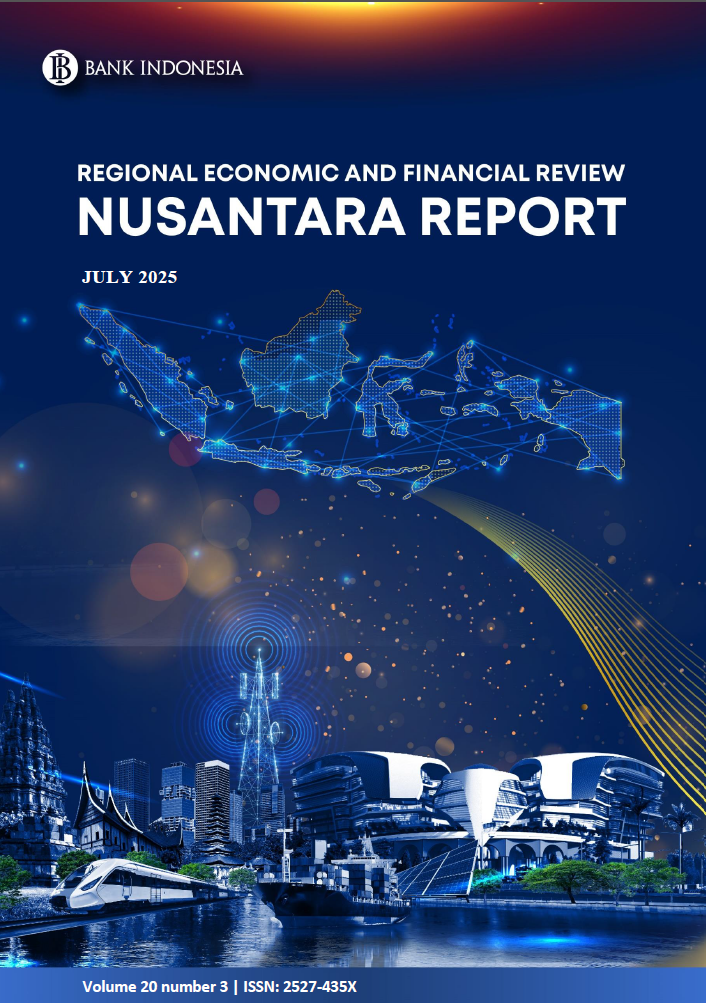 Regional economic growth in the second quarter of 2025 is expected to be maintained notwithstanding rising global uncertainty. Stronger investment bolstered the economy in all regions. The expansion of downstream capacity in mineral producing regions such as Sulampua, Kalimantan and Balinusra has underpinned growth in eastern Indonesia. In the case of Sulampua, economic growth was also supported by improving mining exports. Positive export performance also supported growth in Sumatra and Java in line with efforts to frontload shipments to the United States (US) in response to the planned imposition of reciprocal import tariffs. Stronger investment and export performance helped maintain regional economic growth during a period of weaker consumption after Ramadan and Eid-ul-Fitr festive period. By sector, growth was supported by construction in all regions due to increasing infrastructure spending in the private and public sectors. Mining is also expected to strengthen in most regions outside Java as production increases. Meanwhile, strong growth of the manufacturing industry is anticipated in Sulampua and Balinusra, driven by downstream nickel and copper production.
Regional economic growth in the second quarter of 2025 is expected to be maintained notwithstanding rising global uncertainty. Stronger investment bolstered the economy in all regions. The expansion of downstream capacity in mineral producing regions such as Sulampua, Kalimantan and Balinusra has underpinned growth in eastern Indonesia. In the case of Sulampua, economic growth was also supported by improving mining exports. Positive export performance also supported growth in Sumatra and Java in line with efforts to frontload shipments to the United States (US) in response to the planned imposition of reciprocal import tariffs. Stronger investment and export performance helped maintain regional economic growth during a period of weaker consumption after Ramadan and Eid-ul-Fitr festive period. By sector, growth was supported by construction in all regions due to increasing infrastructure spending in the private and public sectors. Mining is also expected to strengthen in most regions outside Java as production increases. Meanwhile, strong growth of the manufacturing industry is anticipated in Sulampua and Balinusra, driven by downstream nickel and copper production.
Regional economic performance in 2025 is expected to remain solid, yet efforts are required to accelerate growth further. The role of investment in maintaining regional economic resilience must be sustained in the latter half of the year amid external pressures triggered by the trade war. Large scale investment projects in the petrochemical, automotive and electronics industries located in the Java region as well as downstream basic metal industries in Sulampua, Balinusra and Kalimantan will continue until the end of 2025. Government policy support to foster household consumption and accelerate central and regional fiscal spending is expected to maintain regional economic growth. By sector, additional downstream mineral production capacity is projected to support manufacturing industry performance, particularly in Eastern Indonesia. In addition, agricultural sector improvements in all regions, supported by government priority programs, will also strengthen regional economic performance.
Composite Consumer Price Index (CPI) inflation in all regions remained under control in the second quarter of 2025. Core inflation remained low, reflecting anchored inflation expectations and the normalisation of domestic demand following Ramadan and Eid ul Fitr. Volatile food (VF) inflation was controlled below the 5% target, although it increased relative to the preceding period, given the end of the harvesting season in various regions. Meanwhile, administered prices (AP) inflation accelerated after the Government discontinued its tariff discount policy. At the provincial level, inflation in most provinces remained within the target corridor, with the highest inflation recorded in South Papua at 3.00% (yoy) and the lowest rate in West Papua at 0.67% (yoy) deflation.
CPI inflation in all regions is projected to remain within the 2.5%±1% target corridor in 2025. Bank Indonesia's policy mix is oriented towards anchoring inflation expectations within that range, managing imported inflation as well as the positive impact of digitalisation. Volatile food inflation remains under control due to more conducive weather conditions, improving supply and stronger efforts to manage food inflation between Bank Indonesia and the Central and Regional Government under the auspices of the Central and Regional Government Inflation Control Teams (TPIP and TPID). Various efforts to increase production are aligned with government priority programs to achieve food self-sufficiency, including: (i) additional arable land area, (ii) improvements to production facilities and the distribution of production inputs, and (iii) expanding the use of agricultural technology.
Moving forward, strategic global environmental challenges, including geopolitical risks and the domestic outlook, will continue to demand vigilance. The world economic outlook remains overshadowed by high uncertainty which, in turn, could influence local economies. Domestically, it will be essential to support the performance of key sectors and financing in order to maintain solid economic growth. A policy strategy is required, therefore, that increases banking intermediation, targeting potential sectors based on the characteristics of each region. This edition of the Nusantara Report specifically and comprehensively explores such strategies in Part IV Strategic Issue: Economic Prospects and the Financing Supply‑and‑Demand Potential to Support Intermediation and Regional Economic Growth.

